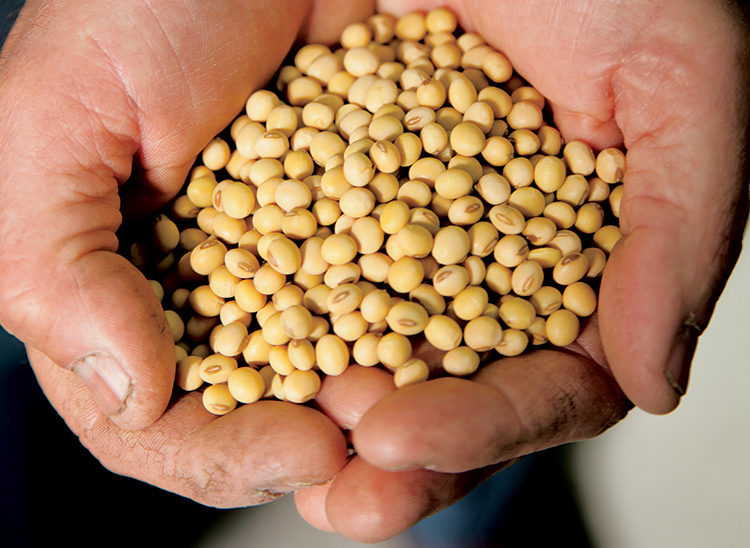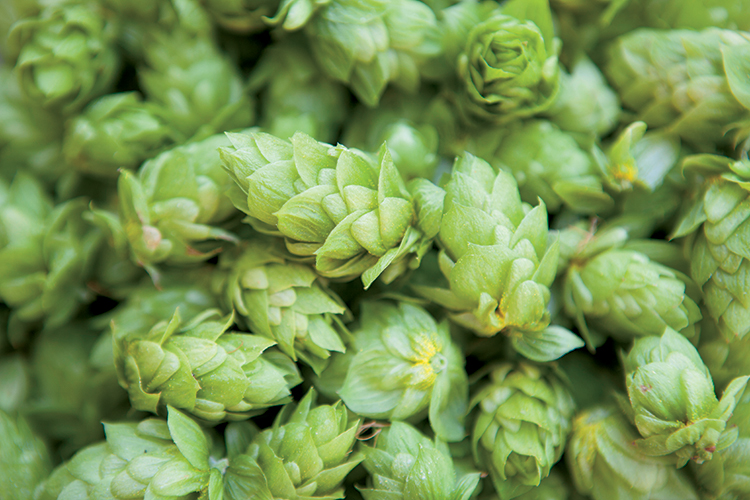Home > Nebraska > Nebraska Farm to Table > Nebraska Agriculture is a Lifeline for the State
Nebraska Agriculture is a Lifeline for the State

In the Cornhusker State, simply put, agriculture is vital.
Whether you’re enjoying a hearty steak dinner or devouring a buttery bag of popcorn at the movie theatre, Nebraska farmers and ranchers are to thank.
Nebraska ranks in the top 10 in the nation in more than 10 commodities and agricultural standings, including No. 1 for commercial red meat production, Great Northern beans production, popcorn production, beef and veal exports, No. 2 for pinto beans production, and No. 4 for land in farms and ranches.
But while many consumers picture agriculture as vast fields of corn, roaming cattle and picturesque barns, there’s much more than meets the eye.
Agribusiness includes companies involved in food production and manufacturing, farm machinery, agrichemical companies and more. Agricultural research and education also are part of the state’s top industry.
With something so routine as eating three meals a day or filling your gas tank, it’s easy to take agriculture for granted. But a strong industry is the cornerstone for Nebraska, as agriculture is responsible for more than a quarter of the state’s economic activity.
International trade, value- added products – such as ethanol – and a spark in agricultural interest have all contributed to the growing success of Nebraska’s agriculture industry. In fact, over the past decade, Nebraska has exported $23 billion in agriculture goods to the world.
The future of the state’s industry rests with the youth. With career opportunities in fields ranging from the environment to alternative energy to international trade, more young people from both urban and rural areas are choosing to study agriculture at one of many programs offered across the state.
In 2014, the Nebraska Department of Agriculture marked its largest Agricultural Youth Institute attendance in its 43-year history.
These advancements continue to push Nebraska agriculture forward, and the future looks bright for all.
Soy Success
As one of the top commodities in the state, Nebraska knows a thing or two when it comes to growing soybeans.
In 2013, Nebraska farmers produced 255,195,000 bushels of soybeans with a production value of just over $3 billion. And 2014 turned out to be a record year for soybean production in the state.
To help the sector stay strong, researchers at University of Nebraska-Lincoln teamed up with researchers from Purdue University to study a soybean gene that affects plant stem growth, which, in turn, could lead to improved soybean cultivars.
This research could eventually lead to increased soybean yields in Nebraska, where the crop is used for everything from the ink in your printer to carpet and insulation, and as an ingredient in a wide variety of foods. In fact, making soyfoods a part of your everyday diet, such as soymilk or soybean oil for cooking, is a simple way to add high-quality proteins, iron, B vitamins and calcium to your diet.
For more information on the state’s soybean industry and how it affects you, visit nebraskasoybeans.org.
![Nebraska Edible Beans [INFOGRAPHIC]](https://eadn-wc01-4177395.nxedge.io/wp-content/uploads/2020/05/Screen-Shot-2015-03-02-at-2.21.01-PM.png)
Brake for Beef
Where’s the beef? Thanks to the new “The Beef State” organizational license plate, Nebraskans can answer that question by proudly displaying the state’s top commodity as they travel across the country.
The Nebraska Cattlemen and the Nebraska Cattlemen Research & Education Foundation received the 500 required applications for the license plate, so now, this easy and effective way to spread the word about Nebraska’s important beef industry will be another familiar road sign. Cattle and calves are the No. 1 commodity in the state, bringing about $12 billion in cash receipts to Nebraska annually.
For more information on the license plate and to order your own, visit nebraskacattlemen.org.
Nebraska Made
There is no doubt Nebraska is an agriculture state. A simple drive on any highway during the summer showcases vast fields of corn, soybeans, dry beans and wheat, or cattle grazing in pastures.
But the state hasn’t missed out on the local foods movement or the entrepreneurial spirit that can take raw commodities and make them into food products. There are a number of resources for folks to turn to when they are looking for food products from Nebraska.
The Nebraska Department of Agriculture has an online Food and Meat Directory, with categories that range from bakery products, to eggs, dairy, meats and snack foods. The directory can be accessed by going to nda.nebraska.gov. and clicking on the Directories section of the Ag Promotion and Development Division.
GROW Nebraska helps small businesses and entrepreneurs connect with consumers. You can find their logo on products in stores, but they also have an online food directory at grownebraska.org.
Buy Fresh, Buy Local Nebraska also provides an Online Food Guide, where consumers can search a number of food categories to find local options. Meats, eggs, dairy, fish and value-added are among the categories. Buy Fresh, Buy Local Nebraska can also help consumers connect with a network of small family farms. Find the website at food.unl.edu/localfoods/farmerrancher.
Hop To It
The craft beer movement is gaining speed across the U.S., and Nebraska is no exception. The state is home to more than 20 craft breweries, according to the Nebraska Craft Brewers Guild, and the industry has opened doors to another new crop for the state – hops.
Hops are used in brewing beer to give it enhanced, unique flavors and control bitterness. Nebraska breweries initially sourced hops from out of state, but now there’s an interest in local hops for a flavor that creates a truly Nebraska beer, according to the Nebraska Hop Growers Association.
As of late 2013, the state had about seven hop farmers, most located in the Fort Calhoun area, which earned the nickname “Hopper Valley.”





![Nebraska Wine [INFOGRAPHIC]](https://eadn-wc01-4177395.nxedge.io/wp-content/uploads/2020/05/Screen-Shot-2015-03-02-at-2.22.33-PM.png)

[…] experienced real estate agent can help you find the best working ranch for sale around the country and they know where the best land certainly is, but you should educate yourself on agro property as well. […]
[…] The climate is conducive to raising cattle as well as sheep. If you find a large enough luxury ranch for sale in this state you could provide your family a relaxing place to live, while also earning an income […]
[…] A ranch farm for sale is more likely to have open fields with fenced perimeters around them, while farms for sale are often more of the vast, sweeping fields that you often see. Ranches are generally larger than […]
[…] more enticing for a luxury cattle ranch. If you are lucky enough to find such ranch land for sale, you need to look into the water rights. Remember, there may also be a national or state park local […]
[…] to knowing how our culture and agriculture works. If you are considering building a ranch or farm, you will definitely need to look into the duties of each and find out which one would best suit […]
[…] For more, read this link. […]
[…] industry, and many states on the West Coast are leading the charge in American crop production. Whether you’re looking at farms for sale in Colorado, California, Texas, or anywhere else on the West Coast, you can find the perfect place for you and […]
[…] of acres available? Unfortunately, finding the perfect cattle ranch for sale or idyllic hunting land for sale isn’t like going apartment shopping online. But that doesn’t mean the Internet […]